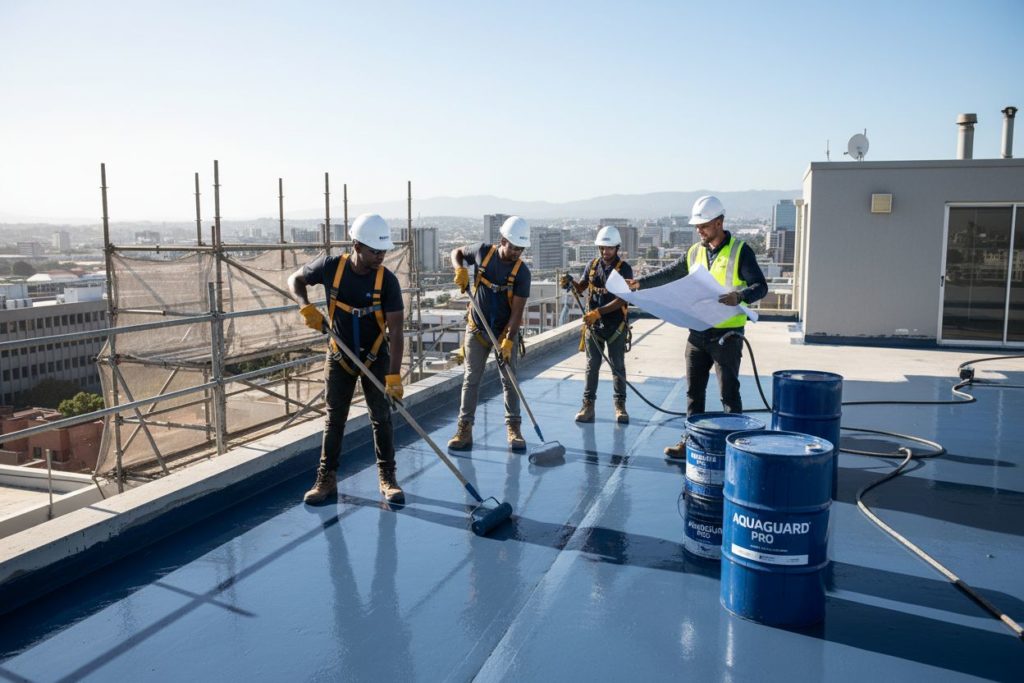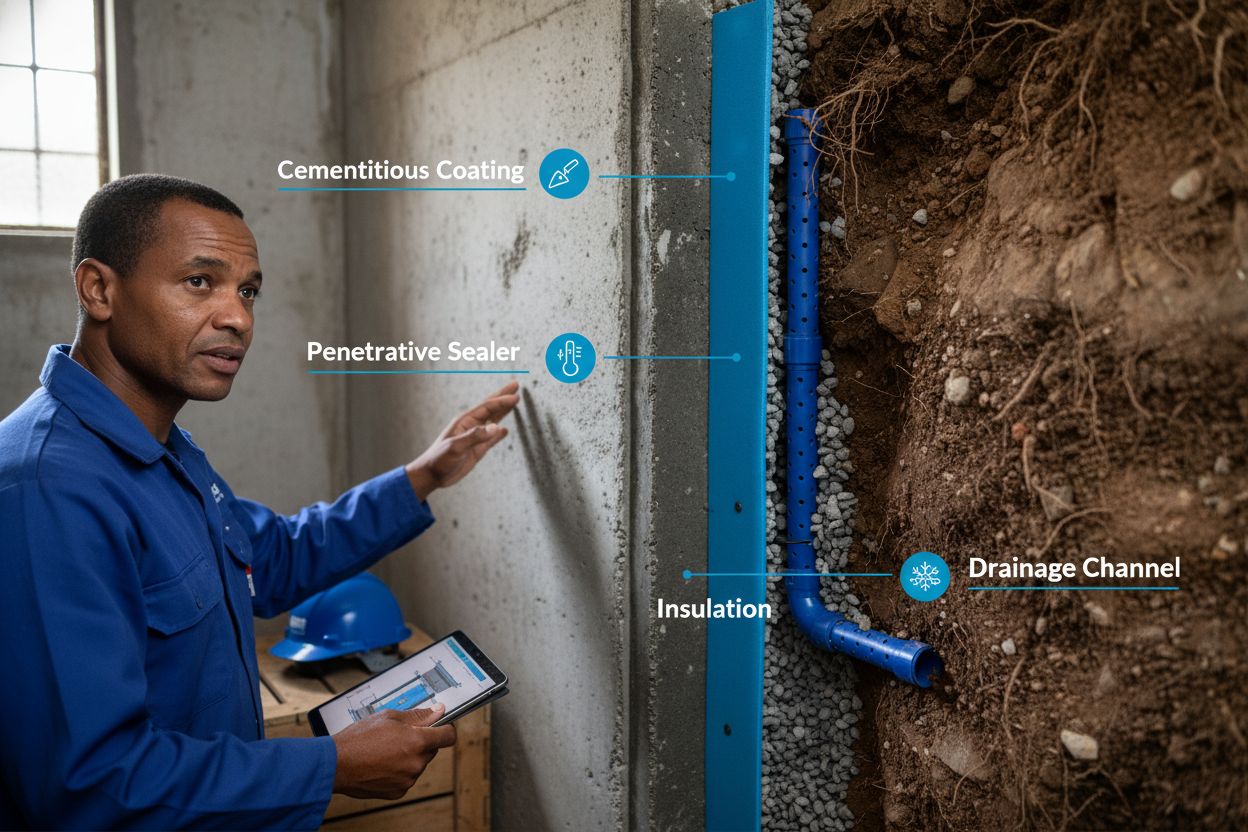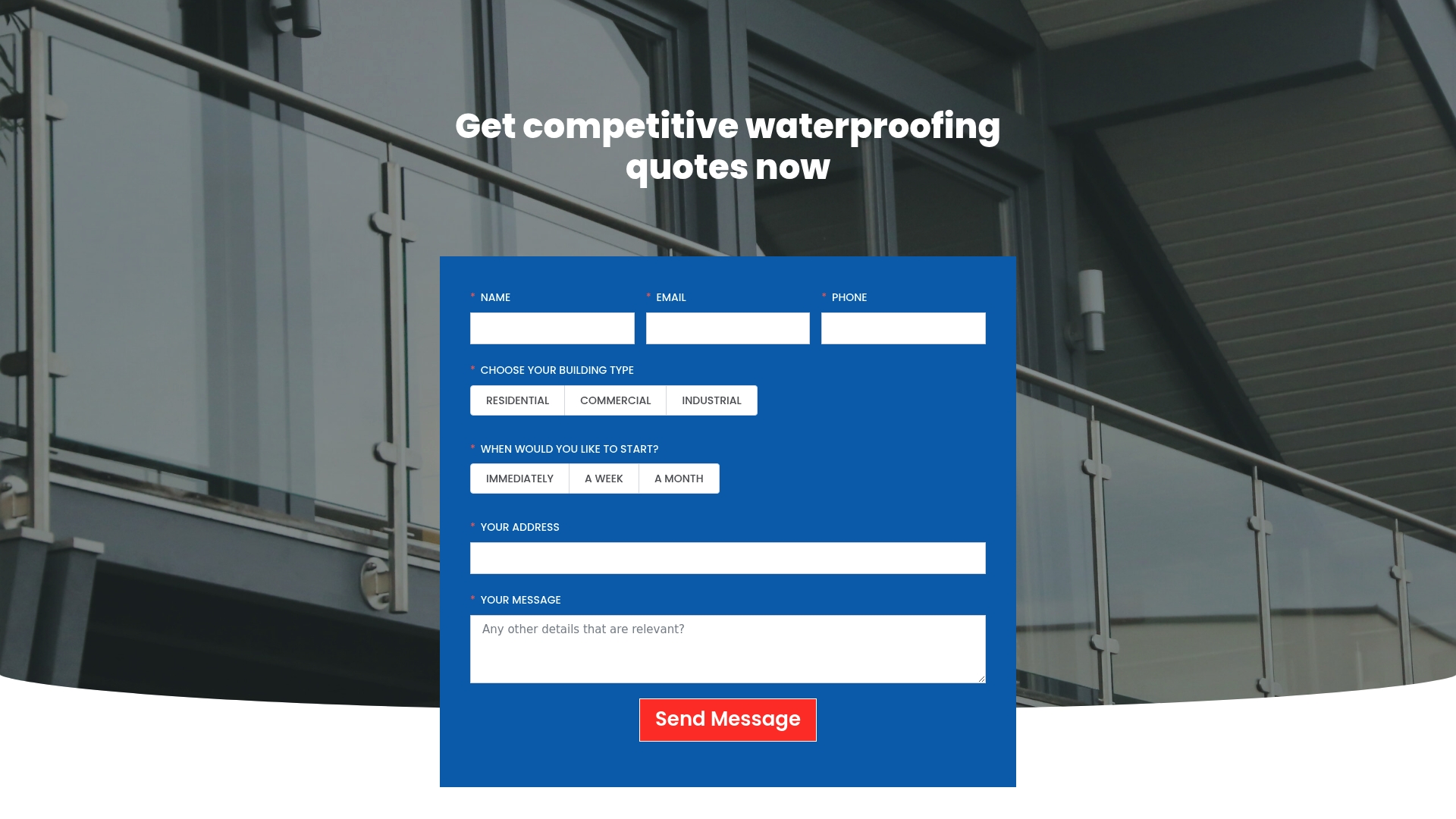Did you know that improper waterproofing can reduce a building’s lifespan by up to 40 percent according to industry experts? Unchecked moisture does more than stain walls and ceilings. It quietly erodes a property’s value and safety, even leading to costly structural failures. By understanding how modern waterproofing systems work and breaking free from common myths, you can make smarter choices that shield your investment from the silent damage water causes.
Key Takeaways
| Point | Details |
|---|---|
| Comprehensive Waterproofing Systems | Modern waterproofing systems are multifaceted, designed to prevent moisture penetration and enhance structural integrity across diverse environments. |
| Evolving Technologies | Advancements in waterproofing technology provide superior solutions such as liquid applied membranes and polyurethane systems that adapt to varying environmental challenges. |
| Long-term Performance | Effective waterproofing requires materials that demonstrate durability for at least 10 years, making informed material choices crucial for long-term protection. |
| Strategic Selection is Essential | Choosing high-quality waterproofing products strategically can prevent costly failures, emphasizing the importance of understanding specific environmental needs and regulatory compliance. |
Table of Contents
- Defining Waterproofing Systems And Common Misconceptions
- Types Of Waterproofing Systems In South Africa
- Key Features And How Waterproofing Works
- Applications In Residential, Commercial, And Industrial Settings
- Risks, Mistakes, And Cost Implications Of Waterproofing
Defining Waterproofing Systems and Common Misconceptions
A waterproofing system is more than just a simple protective layer – it’s a comprehensive approach designed to prevent moisture penetration and protect structural integrity across various environments. According to research from the South African National Building Regulations, these systems must meet stringent performance standards, including resistance to extreme temperatures ranging from -10°C to +80°C, UV exposure, condensation, chemical interactions, and structural movement.
Historically, waterproofing was limited to basic liquid bitumen and torch-on applications. However, modern systems have dramatically evolved to include sophisticated solutions such as:
- Liquid applied coatings
- Single-ply membranes
- Cool-roof thermal coatings
- Penetrative concrete sealers
- Advanced rust inhibitors
A prevalent misconception is that waterproofing is purely reactive and restricted to roof applications. In reality, these systems are now forward-designed, multifunctional protective strategies that address complex environmental challenges across residential, commercial, and industrial structures. Pro Waterproofing emphasises that effective waterproofing requires understanding specific environmental conditions, material compatibility, and regulatory compliance to ensure long-term structural protection.
Property owners often mistakenly believe any coating will suffice, overlooking the critical requirement that materials must demonstrate durability and performance for at least 10 years (20 years for complex structures). By understanding the nuanced nature of waterproofing systems, individuals can make informed decisions that protect their investments against moisture-related damage.
Types of Waterproofing Systems in South Africa
Waterproofing systems in South Africa have evolved significantly, offering diverse solutions tailored to the country’s unique environmental challenges. According to research from Sephaku Cement, the primary types of waterproofing systems can be categorised into several key classifications that address different structural and environmental requirements.
Traditional Waterproofing Methods
Traditional waterproofing methods remain prevalent across South African construction projects, including:
- Cementitious Coatings: Widely used in high-moisture environments like tunnels, basements, and treatment plants
- Bituminous Membranes: Torch-on sheets commonly applied to slabs and roofs
- Basic Liquid Coatings: Simple protective layers with temperature and UV limitations
Modern Advanced Waterproofing Technologies
Research from TT Waterproofing highlights emerging technologies that offer superior protection:
- Liquid Applied Membranes: UV-stable and flexible formulations
- Polyurethane Systems: Rapid cure, chemical-resistant, and highly adaptable
- Advanced Membranes: EPDM and TPO solutions providing lifespans exceeding 30 years
These modern systems demonstrate exceptional dimensional stability across South Africa’s diverse climate zones, addressing the critical need for long-lasting, adaptable waterproofing solutions that can withstand extreme temperature variations and environmental stressors.
A Paradigm Shift in Waterproofing Solutions represents the ongoing technological innovation in protecting structures from moisture damage.
Here’s a summary of traditional versus modern waterproofing systems:
| Aspect | Traditional Methods | Modern Technologies |
|---|---|---|
| Common Types | Cementitious coatings Bituminous membranes Basic liquid coatings |
Liquid applied membranes Polyurethane systems Advanced EPDM/TPO membranes |
| UV Resistance | Limited | High |
| Lifespan | 5–10 years | 20–30+ years |
| Flexibility | Low to moderate | High |
| Typical Applications | Basements Slabs Standard roofs |
Flat roofs Green roofs Car park decks |
| Suitability for SA Climate | Moderate | Exceptional |
Key Features and How Waterproofing Works
Waterproofing systems function through sophisticated mechanisms designed to prevent moisture penetration and protect structural integrity. At its core, waterproofing involves creating barriers or transforming material properties to resist water intrusion across different environments and structural components.
Barrier Protection Mechanisms
Traditional waterproofing approaches primarily rely on creating physical or chemical barriers that block moisture penetration:
- Surface Coating Methods: Applied externally to create a protective shield
- Membrane Systems: Specialized layers that prevent water transmission
- Chemical Penetrative Solutions: Modify material structure to resist moisture
Advanced Crystalline Technology
One groundbreaking approach is crystalline waterproofing technology. According to research from MSASA, this innovative method works by diffusing directly into concrete’s internal structure. Unlike surface barrier systems, crystalline technologies like Xypex react with moisture and cement by-products to form insoluble crystals, delivering permanent waterproofing even under extreme hydrostatic pressure.
The effectiveness of waterproofing systems depends on understanding specific environmental conditions, material compatibility, and application techniques. A to Z of Roof Waterproofing highlights that successful waterproofing is not just about applying a coating, but creating a comprehensive moisture management strategy that adapts to structural needs and environmental challenges.
Applications in Residential, Commercial, and Industrial Settings
Waterproofing systems play a critical role across diverse built environments, offering tailored solutions that address unique moisture protection challenges in residential, commercial, and industrial settings. Each sector requires specialized approaches to ensure structural integrity and long-term durability.
Residential Applications
In residential contexts, waterproofing focuses on protecting living spaces from moisture intrusion:
- Roof Protection: Acrylic and liquid rubber solutions for metal roofing
- Foundation Sealing: Cementitious systems for preventing basement water penetration
- Exterior Wall Protection: Specialized coatings to prevent dampness and structural damage
Commercial and Industrial Solutions
According to research from MRC Africa, commercial and industrial applications involve more complex waterproofing strategies:
- Flat Roof Systems: Torch-on membranes for industrial and commercial buildings
- Structural Slabs: Cementitious waterproofing for foundational elements
- Green Roof Installations: Specialized membranes for sustainable building designs
- Car Park Deck Protection: Advanced waterproofing for high-traffic areas
Research from Sicon Group emphasizes that modern waterproofing goes beyond moisture protection. Polyurethane coatings, for instance, now offer additional benefits like thermal movement accommodation and enhanced UV resistance. Waterproofing for Houses and Other Buildings is Not Negotiable underscores that effective waterproofing is an essential investment across all building types, protecting against potential structural and financial risks.
Risks, Mistakes, and Cost Implications of Waterproofing
Waterproofing failures can transform a minor maintenance issue into a catastrophic and expensive structural problem. Property owners often underestimate the complexity of selecting appropriate waterproofing solutions, particularly in challenging environmental conditions that demand specialized protection strategies.
Common Waterproofing Risks
Traditional waterproofing methods present significant vulnerabilities in harsh climatic environments:
- Material Degradation: Bituminous systems prone to cracking under extreme heat
- UV Sensitivity: Rapid material breakdown from prolonged sun exposure
- Structural Movement: Cementitious systems vulnerable to cracking and separation
- Moisture Penetration: Compromised protective barriers leading to long-term damage
Cost Implications and Strategic Considerations
According to research from Sealtek Cape, choosing low-quality waterproofing products can result in catastrophic failures within months. While locally formulated, high-performance products might initially cost more, they offer remarkable long-term value—delivering 5–10 times longer lifespans compared to standard solutions.
Research from TT Waterproofing emphasizes that modern membranes and polymeric solutions provide superior protection, mitigating traditional risks through enhanced flexibility and UV stability. Understanding How to Identify Waterproofing Failures suggests that proactive assessment and strategic product selection are crucial in preventing costly structural repairs and maintaining building integrity.
Don’t Let Waterproofing Mistakes Jeopardise Your Property—Choose Expertise Today
Have you discovered how complex and critical choosing the right waterproofing system is after reading about the many types, methods and real-life use cases? Many property owners make the common mistake of thinking any product or simple coating will do, not realising that improper waterproofing can lead to costly damage, structural risks and continual repair expenses. The article shows why tailored solutions that consider local climate, structural movement and modern technology are vital for lasting peace of mind.
Cut through uncertainty and start with the professionals who truly understand South Africa’s unique challenges. Visit Pro Waterproofing for proven expertise from trusted contractors. Our team will help you assess your needs, avoid the risks discussed and receive a solid solution with warranties and full guidance. For more details on our expert waterproofing systems or to explore additional resources, see our latest information or go directly to our home page. Protect your investment and act now for effective, long-lasting waterproofing that matches your specific requirements.
Frequently Asked Questions
What are the main types of waterproofing systems?
The main types of waterproofing systems include traditional methods like cementitious coatings and bituminous membranes, as well as modern technologies like liquid applied membranes, polyurethane systems, and advanced EPDM/TPO membranes.
How do waterproofing systems work?
Waterproofing systems work by creating barriers or modifying material properties to resist water intrusion. This can include surface coatings, membrane systems, and chemical treatments that enhance the material’s ability to block moisture.
What are some common mistakes in selecting waterproofing solutions?
Common mistakes include underestimating the specific environmental conditions, assuming any coating will suffice, and choosing low-quality materials that may not last long enough for effective protection. It’s crucial to select products based on their performance and longevity requirements.
How can I ensure the longevity of a waterproofing system?
To ensure longevity, it’s essential to select high-quality materials specifically designed for your environmental conditions, apply them correctly according to manufacturer guidelines, and perform regular maintenance and inspections to detect any initial signs of wear or failure.



